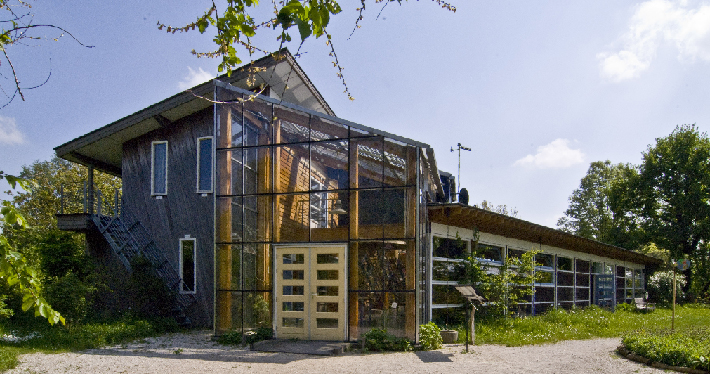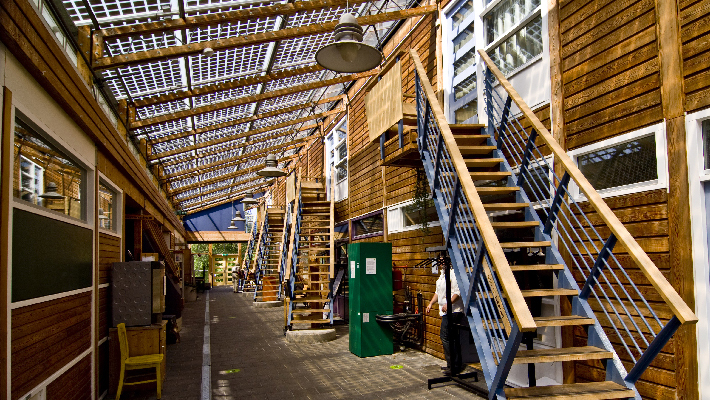The Solar Ark (visitors centre of the Small Earth) opened the doors in 1995. Unfortunately the Small Earth Foundation had to close the doors in 2011. After three years a new user moved in. Triple E is the new ‘green’ user.
The Small Earth Foundation was born in the same period as the New Alchemist in Cape Cod, Findhorn in Scotland and the NCAT in Wales. One of many green initiatives of that time.
The idea behind the design of the Solar Ark is to close loops. Loops of carbon, energy, water and food. The reality is that we did not close all loops but only parts of it. But we tried to demonstrate it to the public.
Energy
Basic principle is too use solar energy. Passive and active solar energy.
Passive solar energy to heat up the spaces used by day.
Active thermal solar energy. A solar hot water system is installed in the roof above the machine room. The hot water is used for the kitchen and the bathrooms.
A photo-voltaic solar system is installed in the glassroof of the corridor. The semi-transparent modules have a triple function: produce electricity, daylight the space and shade and prevent overheating of the corridor.
Water
Like energy, we think that water has the same importance when it comes to conservation. Therefore we use a green roof that can collect and buffer rainwater. The surplus rainwater is collected from the roof and let through a gutter to a small fish pond. The water from this pond is used to flush the minimum-water toilets. The black water coming from the toilets and the grey water is collected in a plant purifying reed bed.
Biobased materials
The material choice is done from a closed loop idea. In the same period, Tjerk Reijenga together with Kees Duijvestein and Frank Stofberg, wrote a book about bio-based materials with the simple title: “Bouwmaterialen en Milieu” (Staatsuitgeverij, The Hague 1990). The philosophy was that natural materials like wood, cellulose, hemp and plant-based paint, could be borrowed from nature and given back to nature at the end of the lifetime. Closing the carbon cycle.
Food
Organic vegetables and fruits are grown in the gardens of DKA. The Solar Ark has a small kitchen where drinks, snacks and lunches are prepared. The food left over goes into the Clivus compost toilet. And so do the visitors. They can uste the Clivus toilet (no water flush) or the low water flush toilet. The waste from the Clivus and the filtered grey water can be used in the garden again. Closing the loop of food and waste.
Indoor air quality
The natural ventilation air can come directly from outside or (preheated) from the corridor. The indoor air quality is improved by the use of natural paint (Auro).

